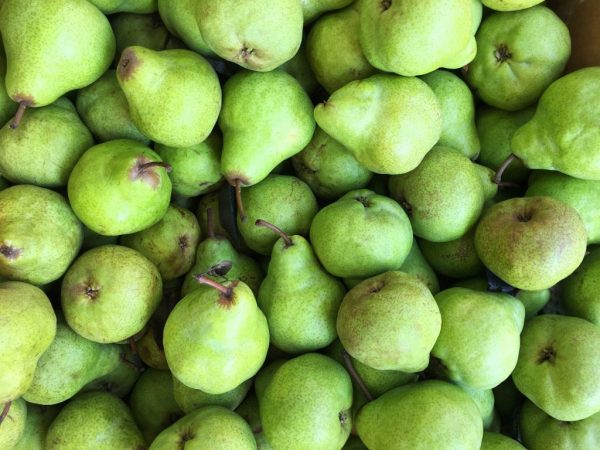Characteristics of the pear variety Zaveya
Pear Zaveya is a winter variety, bred in 2016 by breeders of the Institute of Fruit Growing in Belarus. This culture has a high taste and resistance to frost down to -30 ° C. We will consider a detailed description of the variety in the article.

Characteristics of the pear variety Zaveya
Characteristics of the variety
The Zaveya variety, like most pears, needs artificial pollination. To implement this method of pollination, it is necessary to plant various pollinators around the "Zaveya", the flowering of which will coincide with the flowering of this variety.
Pear fruits have a pleasant aroma and medium size. Weight about 180 gr. They are designed for long-term storage and transportation over long distances. For more than 6 months, the fruit retains a presentable appearance and taste.
The variety is medium-sized, the maximum tree height reaches 4 m. The crown has a pyramidal shape and does not differ in density. During flowering, the entire tree is abundantly covered with white flowers.
Dignity
- High yield;
- Pears have a strong aroma and pleasant taste;
- Frost resistance and growth in any climate;
- Long shelf life.

The fruits are green, their weight is about 180 g
disadvantages
- Prone to illness with poor care;
- In the presence of clay soil, it is characterized by poor growth and yield.
Yield
The tree will bear fruit as early as 3-4 years after planting in the ground, the fruit yield reaches 93%. The seedling is able to shed excess pears on its own, due to which the remaining ones ripen large and even.
Harvested closer to mid-autumn, when the fruits turn green-yellow. Volumes depend on climatic conditions and crop care. Maintenance includes hilling, covering the area around the post with mulch, fertilizing and watering. The culture does not like a lack of moisture, but it also does not tolerate an excessive amount of water. On average, one tree per season produces up to 50 kg of pears, which provides the highest figure among similar species.
It is better to pick the fruits unripe, they will reach in a cool dry place.
The culture is frost-resistant, capable of easily tolerating low temperatures down to -30 degrees, so it does not need shelter for the winter. In order for the tree to maintain a high yield, it is better to process it with lime in the amount of 1 kg per 10 liters of water.
Diseases and pests
This type of pear is characterized as resistant to disease, but can be prone to scab and moniliosis if not cared for properly. The scab first destroys the leaves, forming velvety spots of olive color, and then passes to the fruit. The best prevention against spores of such a fungus is spraying, ventilating and ensuring constant air circulation.
In addition, to protect the tree from scab, it is worth periodically removing old branches and thinning the crown.
Moniliosis is the rotting of fruits, as a result of which half of them fall off, and the other half remains on the tree to rot. This problem can recur from year to year.Bad fruits should be removed immediately, completely affected branches should be cut down, and the tree should be sprayed with burgundy liquid.
findings
This variety is one of the most promising among its competitors. A large number of advantages: frost resistance, high yield, excellent taste and long-term storage of fruits will not leave indifferent either experienced gardeners or amateur gardeners.

